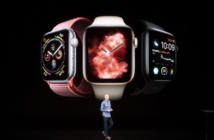
Developers are cranking out cool app after cool app for Apple’s iPhone 3G and other smartphones. But if bandwidth stays skimpy, no one will care.
There’s a new rule in the world of Web 2.0: It had better work on Apple’s iPhone 3G. Indeed, at the just-ended Demo Fall 2008 conference in San Diego, developers whose products weren’t Mac- or iPhone-compatible got strange looks.
The really good news here is that the iPhone, and probably the upcoming Android, are unleashing a huge wave of creative energy. Since the underlying standards are open (on the iPhone, actual app development is not), the barriers to entry are relatively low and we’re seeing a resurgence of garage-based developers reaching for success.
The new applications — some brilliant, some silly — are going to drive purchases in huge numbers of speedy smartphones, and users are going to do what users do: use them. I’m not just talking about consumers, though they are the leading edge of the newest products. Just as the BlackBerry has become an essential business tool — and a support burden for IT — the new high-speed devices will find their way into business and into the help desk queue.
But here’s the bad news: High-speed mobile bandwidth is still limited, and because the carriers are in the driver’s seat, it may be some time until we see an improvement.
The flawed launch of the iPhone 3G is a good example. Users in many parts of the country found that the cool handheld wasn’t running mobile applications much faster than the original despite Apple’s claims of “twice as fast.” A few owners have already filed suits against Apple and AT&T.
OK. I know there are some indications that at least part of the problem could be blamed on the iPhone’s chipset and software stack. At Tuesday’s Apple music event, CEO Steve Jobs said the company will release the much anticipated 2.1 software update at end of the week. It should help. (And it’s already available for iPod Touch users, fixing some performance issues they have.)
Even so, consider what happened in the Washington, D.C., metro area. AT&T promised to have some 800 towers ready at launch. It delivered 80, Wall Street Journal columnist Walt Mossberg (who lives there) has said. How is a software fix going to fix that?
We all know what a great job the telcos have done delivering fixed broadband. The U.S. ranks about 12th in average broadband connection speed, and, you guessed it, first in cost. Even if those numbers aren’t exactly right, they are certainly directionally correct. And remember, delivering DSL or cable broadband relies on existing infrastructure. High-speed mobile does not.
Much of the blame lies with government regulation, or the lack thereof. Congress and the FCC have done a terrible job overseeing telecommunications, largely because of the pervasive influence of industry lobbyists, although old-fashioned cluelessness plays a part as well, particularly at the federal level.
Academics like to talk about the doctrine of network effects, which holds that the value of a good or service to a potential customer is increased when more customers own the good or are users of the service. The fear is that we are going to see a reverse network effect; the more users on the service, the worse the service gets and the less valuable it becomes. Yikes!
Making matters worse is the issue of support. The more widely smart phones are used, the more demand there will be for support, particularly if customers have performance issues. Which they will. If you’ve ever dealt with AT&T technical support for a mobile issue, you know how likely it is that customers will come away feeling satisfied.
I’m not worried about AT&T’s business falling off, but I do worry that a consumer rebellion over bad service will make it harder for independent developers to keep doing what they do best. And ultimately it may take a long time until we all can really enjoy, and profit from, the wave of mobile innovation.



